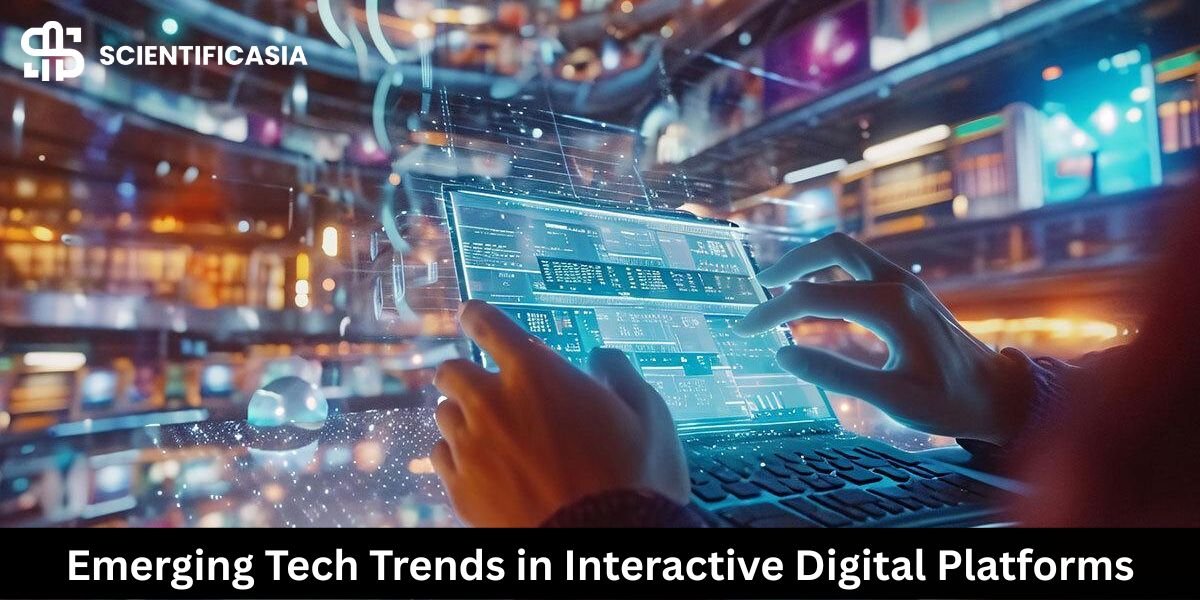The digital landscape is undergoing a profound transformation as new technologies reshape how we interact with content, each other, and the virtual world. From entertainment to education, healthcare to workplace collaboration, interactive platforms are becoming increasingly sophisticated, personalized, and immersive. These innovations aren’t merely technical curiosities—they’re fundamentally changing user expectations and creating new possibilities for human connection and expression in digital spaces.
Spatial Computing Beyond Traditional Screens
I’ll never forget trying my friend’s new mixed reality headset last month—reaching out to manipulate 3D data visualizations floating in my living room felt like stepping into a sci-fi film. Spatial computing is rapidly maturing beyond awkward early implementations into genuinely useful tools that blend digital content with physical environments. At a recent tech conference, I watched architects walk through virtual buildings placed in real landscapes, making adjustments by simply gesturing in the air.
What makes this technology transformative isn’t just the visual overlay but the intuitive interaction models—using natural hand movements rather than abstract inputs like keyboards. My neighbor’s autistic son, previously overwhelmed by traditional interfaces, navigates spatial computing environments with remarkable ease, suggesting these systems might better align with human perceptual abilities. As the devices become lighter, more powerful, and more affordable, we’re approaching a threshold where spatial interfaces could become as common as touchscreens, fundamentally changing our relationship with digital information.
Adaptive Learning Systems with Progressive Complexity
My gaming group recently switched to a new educational platform that reminds me of phase 10 rules in how it cleverly sequences learning challenges—just as that card game gradually introduces more complex patterns through its phases, this system builds skills progressively through carefully calibrated difficulty ramps. The cognitive science professor who designed it explained how their adaptive engine analyzes hundreds of performance variables to create personalized learning pathways for each user.
During my teacher training workshop, I witnessed how the system recognized when a student was struggling with specific math concepts and automatically adjusted, providing different examples or backing up to reinforce prerequisites. What impressed me most was how it identified each student’s optimal challenge point—that sweet spot where material is difficult enough to engage but not so difficult it causes frustration.
Emotional Recognition and Responsive Interfaces
During a particularly frustrating moment with a design application last week, I was stunned when the interface gently asked if I wanted to try a different approach—somehow detecting my mounting frustration through subtle mouse movements and facial expressions. This emotional recognition technology represents a significant leap forward in human-computer interaction. A UX researcher explained to me how their system uses multimodal analysis—combining facial micro-expression tracking, voice tone assessment, interaction patterns, and even typing rhythm—to gauge user emotional states without requiring explicit feedback.
The healthcare app my mother uses actually detected early signs of her depression through changes in her voice patterns and communication frequency, prompting a check-in from her doctor weeks before her regular appointment. What makes these systems different from crude earlier attempts is their ability to respond contextually and appropriately—offering help when users are struggling, backing off when concentration is high, and adapting interfaces to match emotional states. While privacy concerns certainly exist, the developers I interviewed emphasized that processing happens locally on devices with clear user controls over what’s monitored.
Collaborative Persistent Environments
My architecture team recently switched to a collaborative workspace that maintains our entire project in a persistent digital environment—I can literally walk back through our three-dimensional design history to see how decisions evolved over months. These persistent environments represent a significant advance over traditional document-based collaboration, maintaining contextual relationships between information and preserving the organic development of projects over time. During a demonstration at my university, I watched students from three different countries collectively build a virtual ecosystem over weeks, each change and contribution permanently recorded in the environment’s timeline.
The engineering lead explained that their system tracks not just the changes themselves but also the discussions, references, and decision processes that led to them, creating a complete project memory. What makes these environments particularly powerful is their spatially organized information—rather than searching through linear document histories, users navigate a physical-feeling space where information location creates meaningful cognitive maps. For complex, long-running collaborative projects, these environments preserve institutional knowledge in contextually rich formats that traditional documentation systems simply cannot match.
Dynamic Content Generation Through Multimodal AI
Last month, I attended a digital theater performance where the storyline evolved based on the audience’s emotional responses—the experience was subtly different each night depending on the collective audience reaction. This represents the maturation of dynamic content generation systems that can produce contextually appropriate creative material in real time. A game developer demonstrated how their system generates dialogue, character behaviors, and even environmental storytelling elements that respond to player choices while maintaining narrative coherence.
What distinguishes these systems from earlier procedural generations is their multimodal capability—combining text, visual, audio, and interactive elements into cohesive experiences rather than handling each separately. My journalism professor showed us how these technologies are transforming news media, creating personalized explanations of complex topics that adapt to each reader’s background knowledge and information needs. The most sophisticated implementations can maintain consistent style, tone, and quality while generating genuinely novel content that feels authored rather than assembled.
Decentralized Identity and Data Portability
I recently tested a new digital art platform where my creative reputation, follower relationships, and commission history transferred seamlessly from another service—no rebuilding my profile from scratch. This experience highlights the growing movement toward decentralized identity systems that separate our digital identities from specific platforms. The chief technology officer explained that their service uses open protocols, allowing users to maintain consistent identity and data across different digital environments without centralized controlling authorities.
At a digital rights conference, I watched a compelling demonstration of how these systems give users granular control over personal data—choosing exactly what information is shared with which services and maintaining the ability to revoke access. What makes this approach revolutionary is how it inverts the traditional relationship between platforms and users—your digital presence becomes something you truly own and carry with you rather than being locked into individual corporate databases.
Extended Reality for Specialized Training and Simulation
My cousin’s medical school recently replaced cadaver dissection with an extended reality system so sophisticated she can feel different tissue resistances through haptic gloves while visualizing anatomical structures from any angle. These training simulations represent extraordinary advances in experiential learning for high-stakes fields. During a demonstration at an industrial facility, I watched maintenance trainees practice dangerous repair procedures on virtual equipment that accurately simulated every physical property of the real machinery.
The simulation director explained that their system tracks trainee eye movements, stress indicators, and decision patterns to identify knowledge gaps and potential safety issues before they perform procedures on actual equipment. As these technologies become more accessible, they promise to transform training for countless specialized fields where hands-on experience with real equipment would be prohibitively expensive, dangerous, or simply impossible to arrange.
Conclusion
As I’ve explored these emerging technologies across conferences, developer interviews, and early implementations, I’ve been struck by a common thread—they’re all moving toward more natural, responsive, and personalized digital experiences. Rather than forcing humans to adapt to rigid technological constraints, these innovations increasingly mold themselves to human cognitive patterns, emotional needs, and social behaviors. As these trends continue to develop and converge, we’re likely witnessing the early stages of a fundamental shift in our relationship with digital platforms—from tools we explicitly operate to environments that intuitively understand and respond to our needs, potentially making technology simultaneously more powerful and less intrusive in our daily lives.










